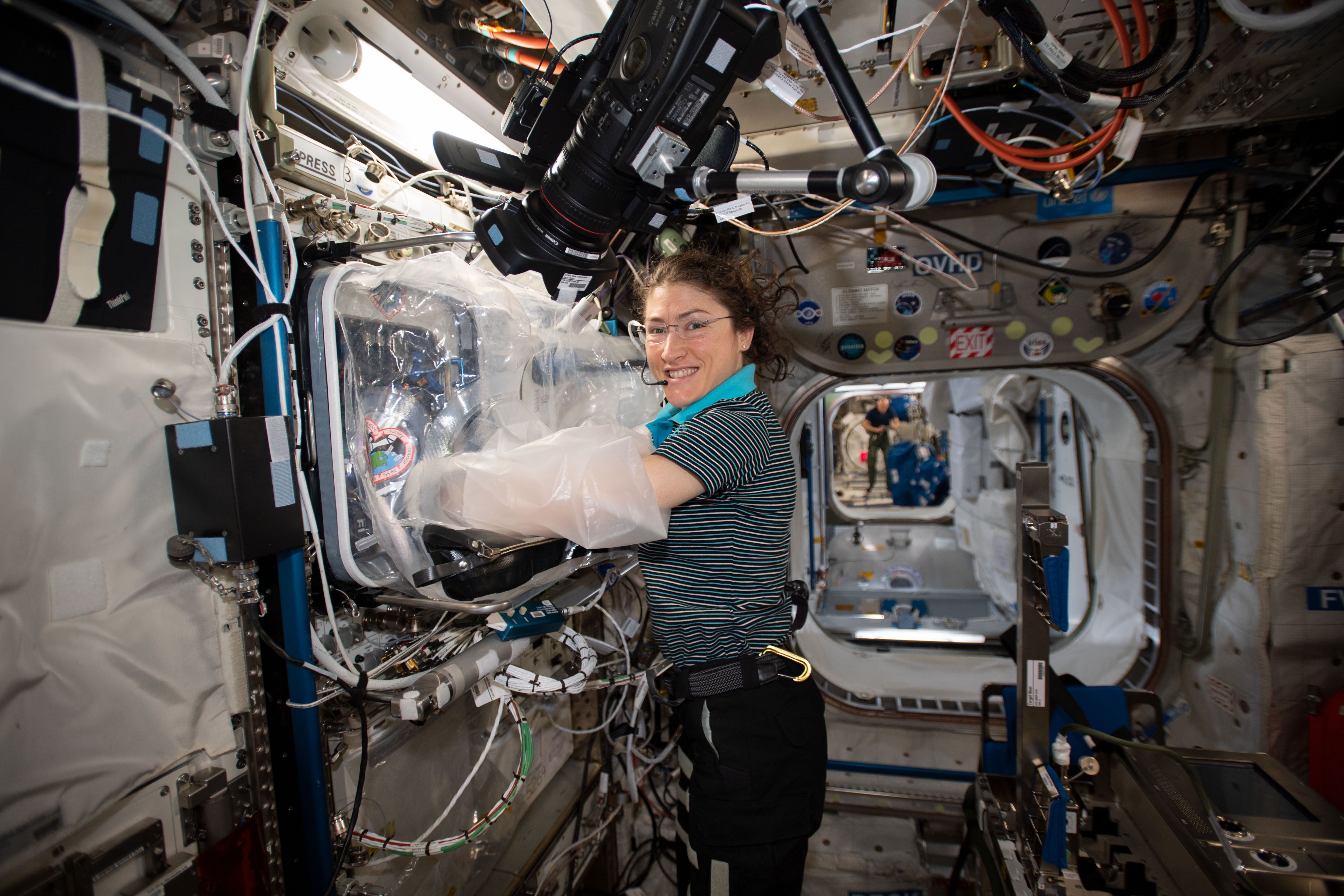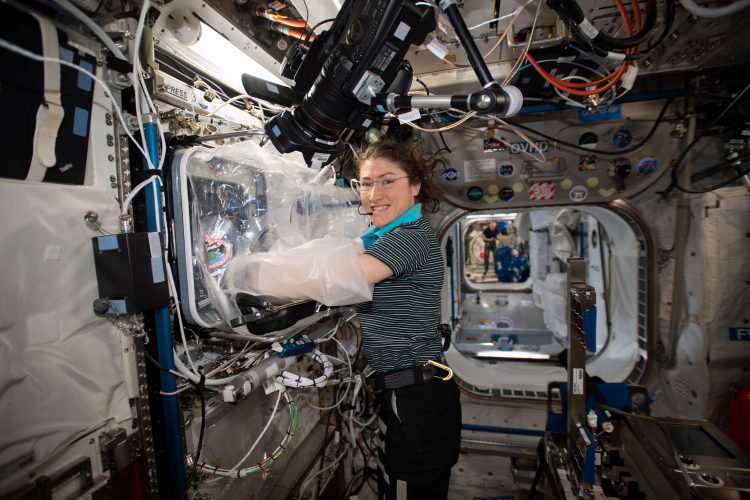
Three-dimensional printers have now assembled candy, clothing, and even mouse ovaries. But in the next decade, specialized bioprinters could begin to build functioning human organs in space. It turns out, the minimal gravity conditions in space may provide a more ideal environment for building organs than gravity-heavy Earth.
If successful, space-printed organs could help to shorten transplant waitlists and even eliminate organ rejection. Though they still have a long way to go, researchers at the International Space Station (ISS) hope to eventually assemble organs from adult human cells, including stem cells.
The medical field has only recently embraced 3D printing in general, particularly in biomedical fields like regenerative medicine and prosthetics. So far, these printers have produced early versions of blood vessels, bones, and different types of living tissue by churning out repeated layers of bioink—a substance comprised of living human cells and other tissue that’s meant to mimic the natural environment that surrounds growing organs.
Already scientists have printed simple pre-organ structures, such as mini liver models and lung-like air sacs. At the moment, though, most of these models struggle to stay upright.
Recently, researchers are finding that Earth might not be the best environment for growing freestanding organs. Because gravity is constantly pushing down on these delicate structures as they grow, researchers must surround the tissues in scaffolding, which can often debilitate the delicate veins and blood vessels and prevent the soon-to-be organs from growing and functioning properly. Within microgravity, however, soft tissues hold their shape naturally, without the need for surrounding support—an observation that’s driven researchers to space.
And one manufacturing lab based in Indiana thinks its tech could play a key role in space. The 3D BioFabrication Facility (BFF) is a specialized 3D printer that uses bioink to build layers several times thinner than human hair. It cost about $7 million to build and employs the smallest print tips in existence.
The brainchild of spaceflight equipment developer Techshot and 3D printer manufacturer nScrypt, the BFF headed to the ISS in July 2019 aboard the SpaceX CRS-18.
Currently, the project focuses on building increasingly thick artificial cardiac tissue and delivering it back to Earth. Once the printed cardiac tissue reaches a certain thickness, it gets harder for researchers to ensure that a printed structure’s layers effectively grow into one another. Ultimately, though, they’d like the organs to arrive here fully formed.
Printed organs would eventually require vasculature and nerve endings to work properly, though that technology doesn’t yet exist.
The next stage—testing heart patches under microscopes and within animals—could span over the next four years. As for whole organs, Techshot claims it plans to begin production after 2025. For now, the project is still in its infancy.
“If you were to look at what we printed, it looks very modest,” says Techshot vice president of corporate advancement Rich Boling. “It’s just a cuboid-type shape, this rectangular box. We’re just trying to get cells to grow one layer into the next.”
“Cooking” organs like pancakes
Compare the manufacturing process to cooking pancakes, Boling says. The space crew first creates a custom bioink “pancake” mix with the cells sent from Earth, which they load with syringe-like tools into the BFF.
Researchers then insert a cassette into the BFF containing a bioreactor—a system that mimics the normal bodily functions essential for growing healthy tissue, like providing nutrients and flushing out waste.
Approximately 200 miles below in Greenville, Indiana, Techshot engineers connect with ISS astronauts on a NASA-enabled secure digital pathway. The linkup allows Techshot to remotely command BFF functions like pump pressure, internal temperature, lighting, and print speed.
Next, the actual printing process occurs within the bioreactor and can take anywhere from moments to hours, depending on the shape’s complexity. In the final production step, the cell-culturing ADvanced Space Experiment Processor (ADSEP) “cooks” the theoretical pancake; essentially, the ADSEP toughens up the printed tissue for its journey back to earth. This step could take anywhere from 12 to 45 days for different tissue types. When completed and hardened, the structure heads home.
The researchers have gone through three testing processes so far, each one getting more exact. This March, they’ll begin the third round of experiments.
The bioprinter space race
The BFF lab is the sole team developing this specific type of microgravity bioprinter, Boling says. They’re not the only ones looking to print human organs in space, though.
A Russian project has also entered the bioprinting space race, however their technique highly differs. Unlike the BFF’s bioink layering method, Russian biotechnology laboratory 3D Bioprinting Solutions uses magnetic nanoparticles to produce tissue. An electromagnet creates a magnetic field in which levitating tissue forms the desired structure—technology that appears ripped from the pages of a sci-fi novel.
It’s a commercial venture like the BFF, founded by a Russian medical company that infamously printed meat in space. The Russian team made history in March 2014 after successfully assembling and transplanting a thyroid gland into a mouse.
After their bioprinter fell victim to an October 2018 spacecraft crash, 3D Bioprinting Solutions rebounded; the team now collaborates with US and Israeli researchers at the ISS. Last month, their crew created the first space-bioprinted bone tissue. Similar to the US project, 3D Bioprinting Solutions aims to manufacture functioning human tissues and organs for transplantation and general repair.
“Just because we have the technology to do it, should we do it?”
If the 3D BioFabrication Facility prospers in printing working human organs, they’d be subject to thorough regulation here on Earth. The US approval process is stringent for any drug, Rich Boling says, posing a challenge for this unprecedented invention. Techshot predicts at least 10 years for space-printed organs to achieve legal approval, though it’s an inexact estimate.
Along with regulatory acceptance, human tissue printed in microgravity may encounter societal pushback.
Each country maintains varying laws related to medical transplants. Yet as bioengineering advances into the the final frontier, the international scientific research community may need to shape new guidelines for collaboration among the stars.
“As the commercialization of low-Earth orbit continues to ramp up in the next few years, it is certainly true that we’re going to have to take a very close look at the regulations that apply to that,” says International Space Station U.S. National Laboratory interim chief scientist Michael Roberts. “And some of those regulations are going to stray into questions related to ethics: Just because we have the technology to do it, should we do it?”
Niki Vermeulen, a University of Edinburgh science technology and innovation studies lecturer, has researched the social implications of 3D bioprinting experiments. Like any Earth-bound project, she urges scientists not to get people’s hopes up too early in the process; individuals seeking organ transplants could read about the BFF online and think it could soon be ready to meet their needs.
“The most important thing now, I think, is expectation management,” Vermeulen says. “Because it’s really quite difficult to do this, and of course we really don’t know if it’s going to work. If it did, it would be amazing.”
Another main issue is cost. Like other cutting-edge biotechnology innovations, the organs could also pose a major affordability challenge, she says. Techshot claims that a single space-printed organ could actually cost less than one from a human donor, since some people must pay for a lifetime of anti-rejection meds and/or multiple transplants. There’s currently no telling how long the BFF process would actually take, however, compared to the conventional donor route.
Plus, there’s potential health risks for recipients: Techshot chief scientist Eugene Boland says cell manipulation always presents a possibility of genetic mutation. Modified stem cells can potentially cause cancer in recipients, for example.
The team is now working to define and minimize any dangers, he says. The BFF experiment adheres to the FDA’s specific regulations for “human cells, tissues, and cellular and tissue-based products.”
Researchers on the ground now hope to perfect human cell manipulation: Over 100 US clinical trials presently test cultured autologous human cells, and several hundred test cultured stem cells with multiple origins.
What comes next
After the next round of printing tests this March, Techshot will share the bioprinter with companies and research institutions looking to print materials like cartilage, bone, and liver tissue. They’re currently preparing the bioprinter for these additional uses, Boling says, which could advance health care as a whole.
To speed things up for space crews, Techshot is now building a cell factory that produces multiple cell types in orbit. This technology could cut down the number of cell deliveries between Earth and space.
Russia-based 3D Bioprinting Solutions similarly plans to sell equipment to businesses and universities while developing its core project.
The ISS has taken in plenty of commercial ventures in recent years, Michael Roberts says, and it’s getting crowded up there. Space-based experiments ramped up between 40 and 50 years ago, though until recently they mostly prioritized satellite communications and remote observation technology. Since then, satellites have shrunk from bus-sized to smaller than a shoebox.
Roberts has witnessed the scientific areas of interest broaden over the past decade to include medicine. Organizations like the National Institutes of Health are now looking to space to improve treatments, and everything from large pharmaceutical companies to small-scale startups want in.
“They’ve got something stuck on every surface up there,” he says.
As the ISS runs out of space and exterior attachment points, Roberts predicts that commercial ventures will build new facilities built for specific activities like manufacturing and plant growth. He sees it as a good opportunity for further innovation, since the ISS was originally designed for far more general purposes.
Space, as a whole, may start to look quite different from the first exploration age.
Baby boomers may remember glimpsing at a grainy, black-and-white moon landing five decades ago. Within the same lifetime, they could potentially observe the introduction of space-printed organs.
